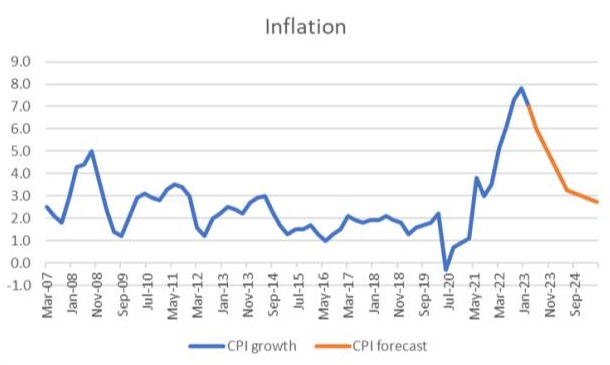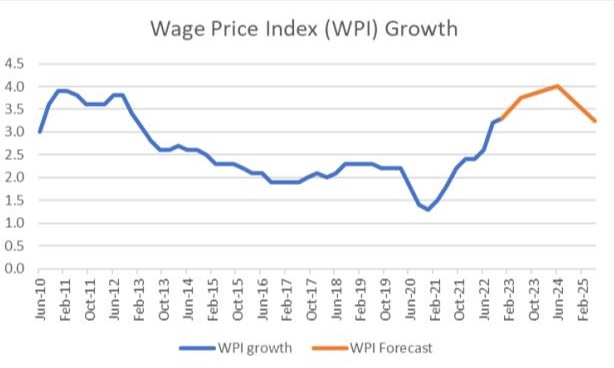The Treasurer heralded a return to surplus and an overall improvement in the economy as part of the big picture painted by this week’s budget.
Jim Chalmers said the budget would protect the nation and ensure it prospered despite a slowdown in the global economy.
You’re out of free articles for this month
“The global economy is slowing due to persistent inflation, higher interest rates and financial sector strains,” Dr Chalmers said in his speech on Tuesday night.
“Outside of the pandemic and the global financial crisis, the next two years are expected to be the weakest for global growth in over two decades. This will affect us here in Australia.”
“So, while Australia may have a lot coming at us – we have a lot going for us too.”

On the back of increased prices for resources and commodities, the government forecast a surplus for this year with less debt and smaller deficits compared to previous budgets.
Dr Chalmers said while the country’s economic growth would slow due to the global economy it would still be able to keep unemployment levels near historical lows.


“Our economic growth is expected to slow from 3.25 per cent in 2022–23 to 1.50 per cent the year after, before recovering to 2.25 per cent in the next,” he said.
“Despite this, our economy will continue to create jobs and unemployment is expected to remain low by historical standards - 4.25 per cent in 2023–24, 4.50 per cent the year after.”
He said the budget would also continue the government’s goal of easing inflationary pressures and providing relief to businesses and households nationwide.
“This budget is carefully calibrated to alleviate inflationary pressures, not add to them,” said Dr Chalmers.
“Our policies to ease the pressure on households will take 0.75 of a percentage point off inflation in 2023–24 – which is expected to fall from 6 per cent this year to 3.25 per cent next year.”
“Still higher than we’d like for longer than we’d like – but tracking in the right direction.”

Due to the inflation reduction Dr Chalmers said Australians would see the return of real wage growth that would assist households struggling to keep up with the cost of living.
“After a decade of being kept deliberately low, wages are moving again,” said Dr Chalmers.
“Wages growth for 2023–24 is now forecast to be 4 per cent – up 0.25 of a percentage point from what was expected in October.”
“This combination of lower than expected inflation and higher wages, means that an earlier and stronger return to real wages growth is forecast for 2023–24.”

Josh Needs
AUTHOR
Josh Needs is a journalist at Accountants Daily and SMSF Adviser, which are the leading sources of news, strategy, and educational content for professionals in the accounting and SMSF sectors.
Josh studied journalism at the University of NSW and previously wrote news, feature articles and video reviews for Unsealed 4x4, a specialist offroad motoring website. Since joining the Momentum Media Team in 2022, Josh has written for Accountants Daily and SMSF Adviser.
You can email Josh on: This email address is being protected from spambots. You need JavaScript enabled to view it.

 Login
Login












